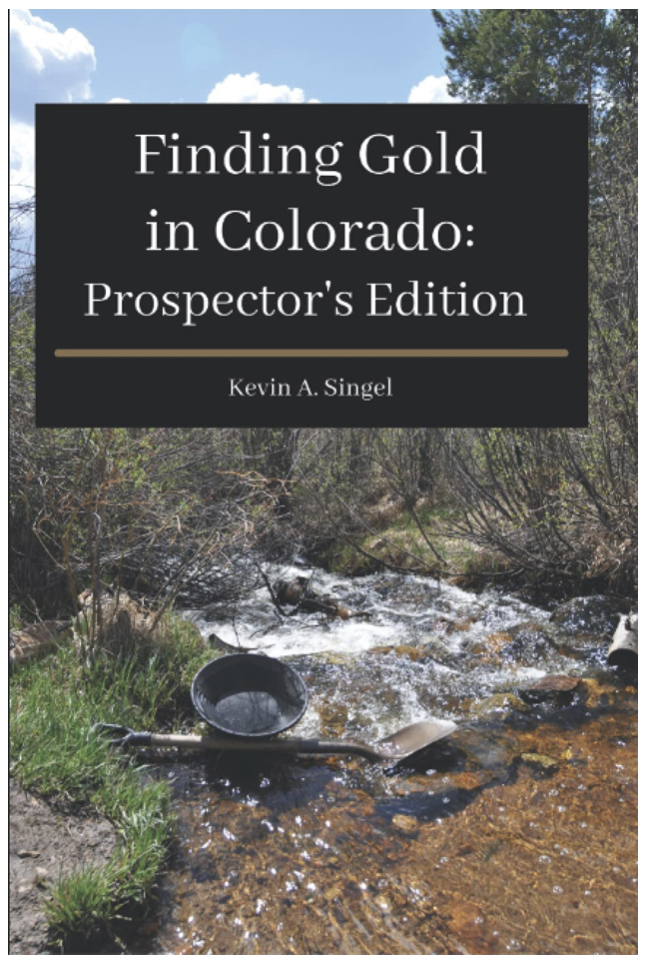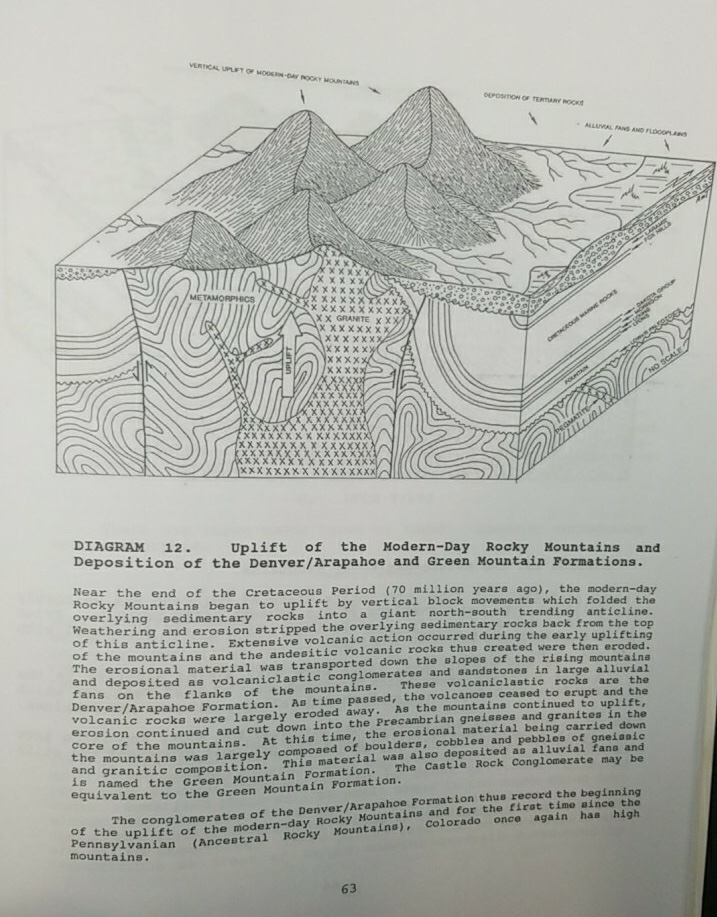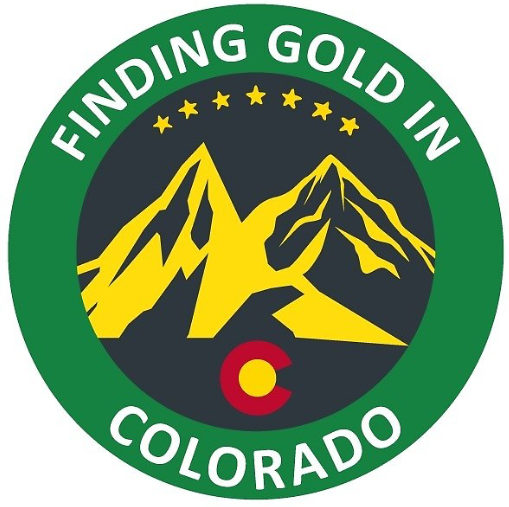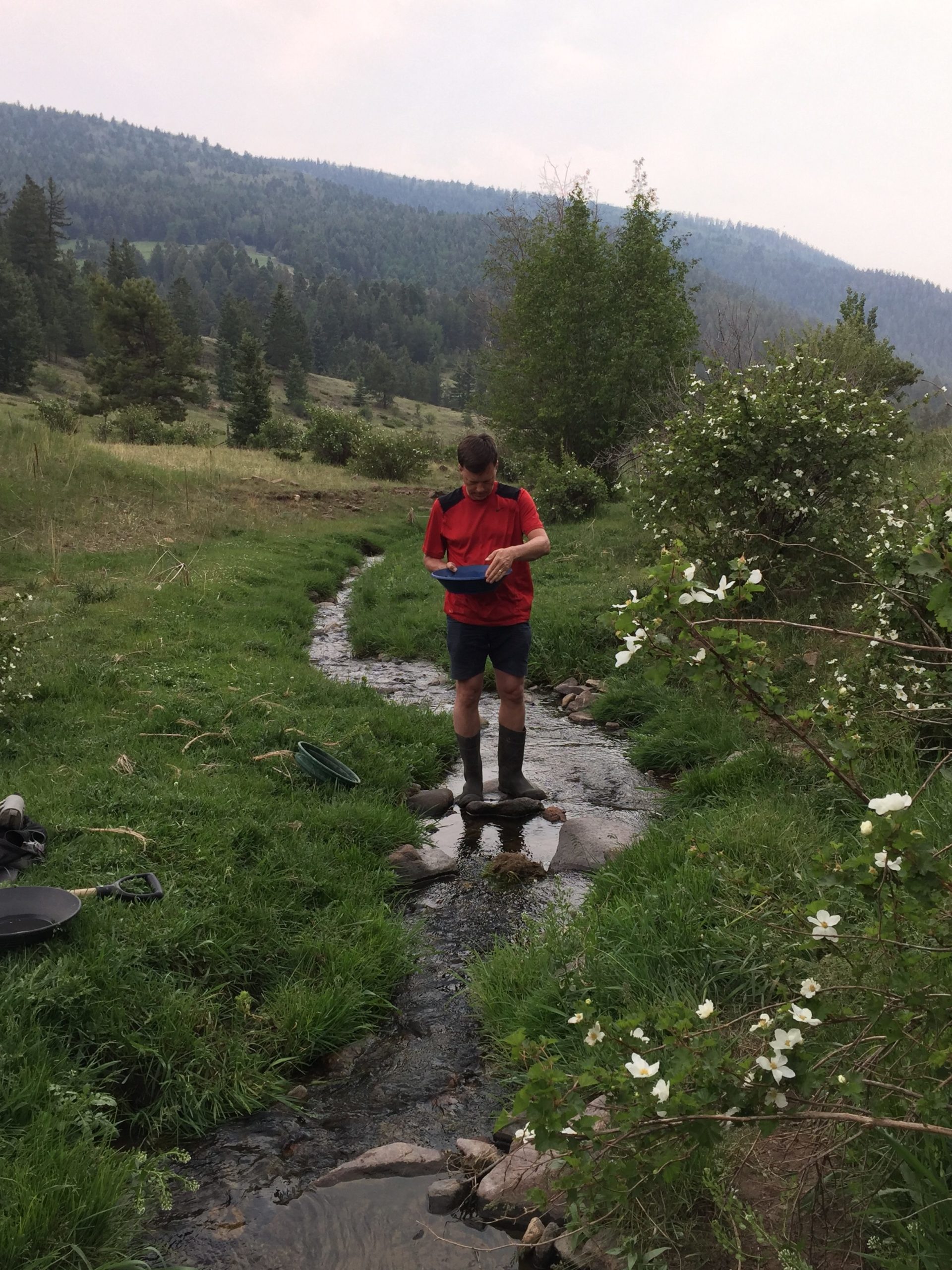The gold in metro Denver is in almost every waterway big enough to have a name. In the early days of the gold rush this was confusing and frustrating for the first American prospectors. They found gold way out southeast in Elbert County, due south of what’s now Denver in Douglas County and Arapahoe County…and right in downtown Denver. Of course that’s why Denver is where it is!
However each of these deposits was quickly shown to be too small to make the miners rich. They also couldn’t find the hard rock sources of the gold. This meant many of the first serious prospectors in 1858 gave up and went back east. Of course we know there’s lots of gold in the mountains of Colorado …as the more tenacious prospectors found for themselves in early 1859!
Here’s an early map showing the important early towns. It illustrates the locations focused on by the first migrant prospectors:

Places like Frank’s Town (now Franktown) and Russelville (not really a place any longer) were important early gold discoveries in the summer of 1858 but were declared a “hoax” by that fall.
The geologic story behind this is that there are multiple origins of the gold in metro Denver. The obvious source is the mountains just west of town. This gold was washed down via the South Platte River (unlabeled above but running north thru Denver, shown as a wide line on the map) and via smaller waterways such as Clear Creek (called Vasquez Cr. On the map) and Ralston Creek. The confusing part is the gold in Cheery Creek (now called Cherry Creek) running through Franktown and Russelville. It actually originates from mountain tops long weathered away as the Rockies formed during the latter part of the time of the dinosaurs. These erosion periods included the formation of a massive tropical, torrential river which flowed from the mountains west of Boulder southerly along the front range through what is now Arvada, Denver, Parker, Franktown and “Russelville”. The ancient river left a layer of river cobbles and gold bearing sediments in our soil, called the Castle Rock Formation. This thick layer of conglomerate rock can be easily seen today as the cap layer on the Castle Rock next to the town of the same name. Amusingly enough, the portion of the Castle Rock formation in and around the town of Castle Rock is NOT gold bearing because those particular deposits were left behind by a tributary of the main gold bearing main river. The tributary just wasn’t gold bearing sadly.

The interesting part for prospectors lies in the fact that this layer of gold bearing rock once covered a strip of metro Denver from northwest metro Denver diagonally through town to Castlewood Canyon and even Larkspur. It stretched from the edge of the foothills on the northwest, all the way into the western part of Elbert County in the southeast. Of course, across most of this area, the gold bearing rock is long since decomposed and is often buried under a thick layer of sand or clay. This means there’s a layer of gold bearing material under many homes and businesses in metro Denver and it’s been laying there as placer gold for tens of millions of years!
Cool but “so what?” you say? Well, in many spots, this gold layer is close to the surface or even on the surface. This naturally means it is cut through by local creeks and there is the possibility of finding honey holes where those modern creeks have concentrated the gold from the material they washed away over the last thousands of years. These creeks feed into the South Platte in their turn and are also important contributors to the gold in the South Platte through metro Denver and north from there. Of course, the South Platte itself gathers and reconcentrates this gold as well. What confused the original American prospectors can be great information for us…and a fun, productive source of gold as well!
I’ve had very good success prospecting the smaller waterways of south metro Denver and you can too. If you go looking, please:
1. Know who owns the land and get permission or follow the posted rules on locally owned public lands.
2. Leave sites as you find them so as to avoid inspiring complaints from other users of recreational open space.
3. Pick up trash and be friendly to those you meet – be a good ambassador and guest!
4. Keep in mind that most of these spots are very small and can’t support many visitors at once.
5. Above all, avoid being that one bad apple whose action leads to prospecting and rock hounding being banned in an open space park!!
As always, I look forward to your thoughts and questions via comments here, emails or Facebook comments on the Facebook group “Finding Gold in Colorado”.
Just for fun, here’s a few shots of gold I found in the little creeks of south metro Denver:
By the way each of these pics documents my result from 1-2 hours of digging and feeding a sluice. Yup, there’s good gold in South metro Denver. Go get yours!
In my guidebook, I provide a lot more details on places around metro Denver to go prospecting (as well as LOTS of places across Colorado Gold Country); check it out here.

Here’s some interesting geology detail:

For geology geeks, dive deeper with this PhD thesis: Guide Book To The Geology Of Red Rocks Park And Vicinity from Andrew M. Taylor in 1933: Buy it here.
One note: The thesis research focused exclusively on the area east of the town of Castle Rock. However, we now know the castle rock formation extended further west to the current bed of the South Platte River and is gold bearing across that whole area once you get north of Dartmouth Ave in the southern suburbs.
This site costs money to keep up. The only way it pays for itself is shopping referrals. If you appreciate the info here, please click thru one of my Amazon ads the next time you want to shop online. It won’t cost you anything extra and it keeps the site going: SHOP HERE









11 thoughts on “So where did all this gold come from anyway?”
Hi Kevin, I live in Yoder, Colorado, I like your site and pics of gold found in Cherry Creek. The creek is within 1 hour drive for me, can you tell me about where the gold starts to show up and maybe where I can park? I have the upcoming week off and would like to check it out.
Hi Bob, Cherry Creek has gold in lots of spots but it is pretty fine stuff for the most part and generally buried under lots of sand. You would be better off going to one of the spots I have written specifically about in metro Denver. Good luck!
If you mean the gold deposits of the castlerock formation, it is spotty and spread thru all the creeks running thru northern Douglas County and southern Arapahoe County. The gold even stretches into western Elbert County where you will find Gold Creek! (yes I found a sample of gold there once) However, as I share in the main post, you will have to do a bit of research to make sure you are on open ground before digging since some (not much) is private ground and some is controlled by Douglas County Open Space and they forbid taking anything (even a twig) from their lands.
Very nicely done .. Nice blogspot for sure .. I have forwarded your blog to many in the club to be knowledgeable of who you are and not just someone who wants to know exactly where the spot is to dig up gold. Looking forward to meeting you and the Mrs. hopefully this summer
Thanks Diana! I’m looking forward to meeting you too. I expect to make it over from Summit Co to a meeting fairly soon 🙂
And thanks for the compliment on being a genuine prospector aka SEARCHER for gold. I very much enjoy the sleuthing AND the finding!
Hi Kevin,
Love your site and all the info. I live down in Parker and am wondering if any of the sections of Cherry Creek down here are accessible for a little sluicing and panning. Where would I locate info on access in the state (besides all the articles you publish)?
Hi Doug, Cherry Creek is challenging due to all the sand in it. Yes, there’s gold in there somewhere but you’ll most likely be more successful elsewhere. The second problem in Douglas County is that the Douglas County Open Space Parks does not allow any prospecting or rock hounding or anything. I suggest you grab a copy of my book which has 186 dig sites across Colorado for gold prospectors. http://www.findingGOLDinColorado.com/buy-the-book/
Hi Kevin,
My name is Phil Morgans and I am interested in joining (a) prospecting and/or metal detecting club in addition to corresponding with you. I have not prospected actively for many years but have recently caught the bug again. Please contact me so that we may chat.
Thanks, Phil
Hi Philip, your thought to find a club is an excellent one! There are a couple of good clubs in metro-Denver, and others across the state. Check out my article covering all the clubs across the state at http://www.findinggoldincolorado.com/clubs-in-Colorado/
As far as meeting up, I always enjoy that too 🙂 I often post about my prospecting plans in my Facebook group. Of course others in the group do the same AND will offer to meet you on the creek if you ask! The group is called “Finding Gold In Colorado” as you might guess 👍🏻
Hi Kevin,
Do you know if plum creek through castle rock has gold and is open to panning? Haven’t had any luck finding info on it.
It doesn’t have any gold. Sorry but you’ll have to go further East or north to find gold.